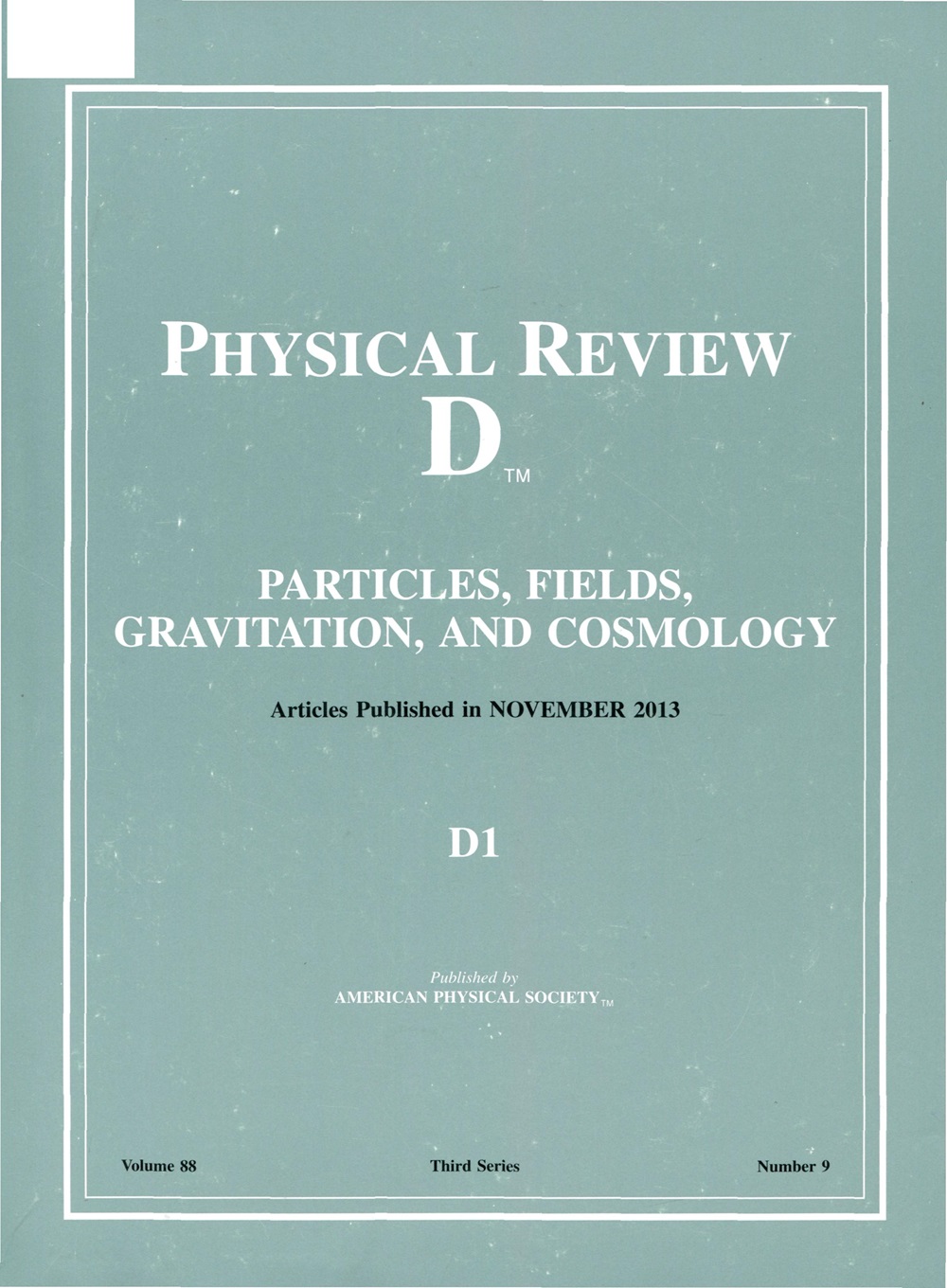Rho-meson screening mass in the presence of strong magnetic fields
IF 5
2区 物理与天体物理
Q1 Physics and Astronomy
引用次数: 0
Abstract
We study the screening mass of the neutral rho-meson in the presence of strong magnetic fields using the Kroll-Lee-Zumino (KLZ) model. The rho-meson self-energy is computed at one-loop order within the lowest Landau level (LLL) approximation, considering the magnetic field as the dominant energy scale. Due to Lorentz symmetry breaking induced by the external field, we decompose the self-energy into three independent tensor structures, which give rise to three distinct modes. Additionally, the four-momentum splits into parallel and perpendicular components, leading to two types of screening masses: the parallel screening mass (p0=0 and强磁场存在下的rho介子筛选质量
利用Kroll-Lee-Zumino (KLZ)模型研究了中性rho介子在强磁场作用下的屏蔽质量。考虑磁场作为主导能量尺度,在最低朗道能级近似下,以单环阶计算rho介子自能。由于外场引起的洛伦兹对称破缺,我们将自能分解为三个独立的张量结构,从而产生三种不同的模态。此外,四动量分为平行和垂直分量,导致两种类型的筛选质量:平行筛选质量(p0=0和p⊥→0)和垂直筛选质量(p0=0和p∥→0)。结果表明,零模和垂直模随磁场强度的增加而单调增加,而平行模基本保持不变。这些发现为强磁化介质中矢量介子的行为提供了新的见解,并对极端条件下的QCD产生了影响。2025年由美国物理学会出版
本文章由计算机程序翻译,如有差异,请以英文原文为准。
求助全文
约1分钟内获得全文
求助全文
来源期刊

Physical Review D
物理-天文与天体物理
CiteScore
9.20
自引率
36.00%
发文量
0
审稿时长
2 months
期刊介绍:
Physical Review D (PRD) is a leading journal in elementary particle physics, field theory, gravitation, and cosmology and is one of the top-cited journals in high-energy physics.
PRD covers experimental and theoretical results in all aspects of particle physics, field theory, gravitation and cosmology, including:
Particle physics experiments,
Electroweak interactions,
Strong interactions,
Lattice field theories, lattice QCD,
Beyond the standard model physics,
Phenomenological aspects of field theory, general methods,
Gravity, cosmology, cosmic rays,
Astrophysics and astroparticle physics,
General relativity,
Formal aspects of field theory, field theory in curved space,
String theory, quantum gravity, gauge/gravity duality.
 求助内容:
求助内容: 应助结果提醒方式:
应助结果提醒方式:


